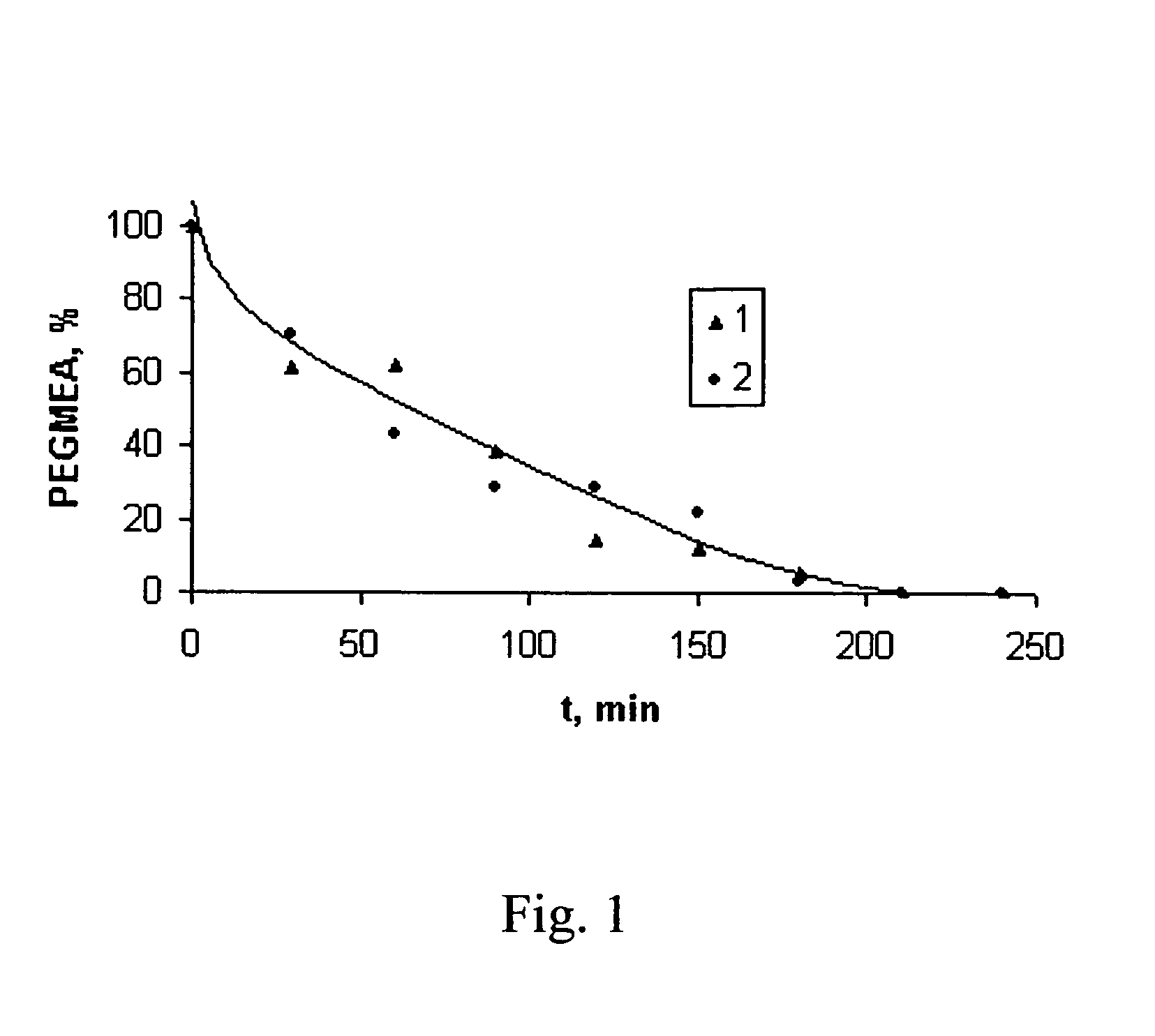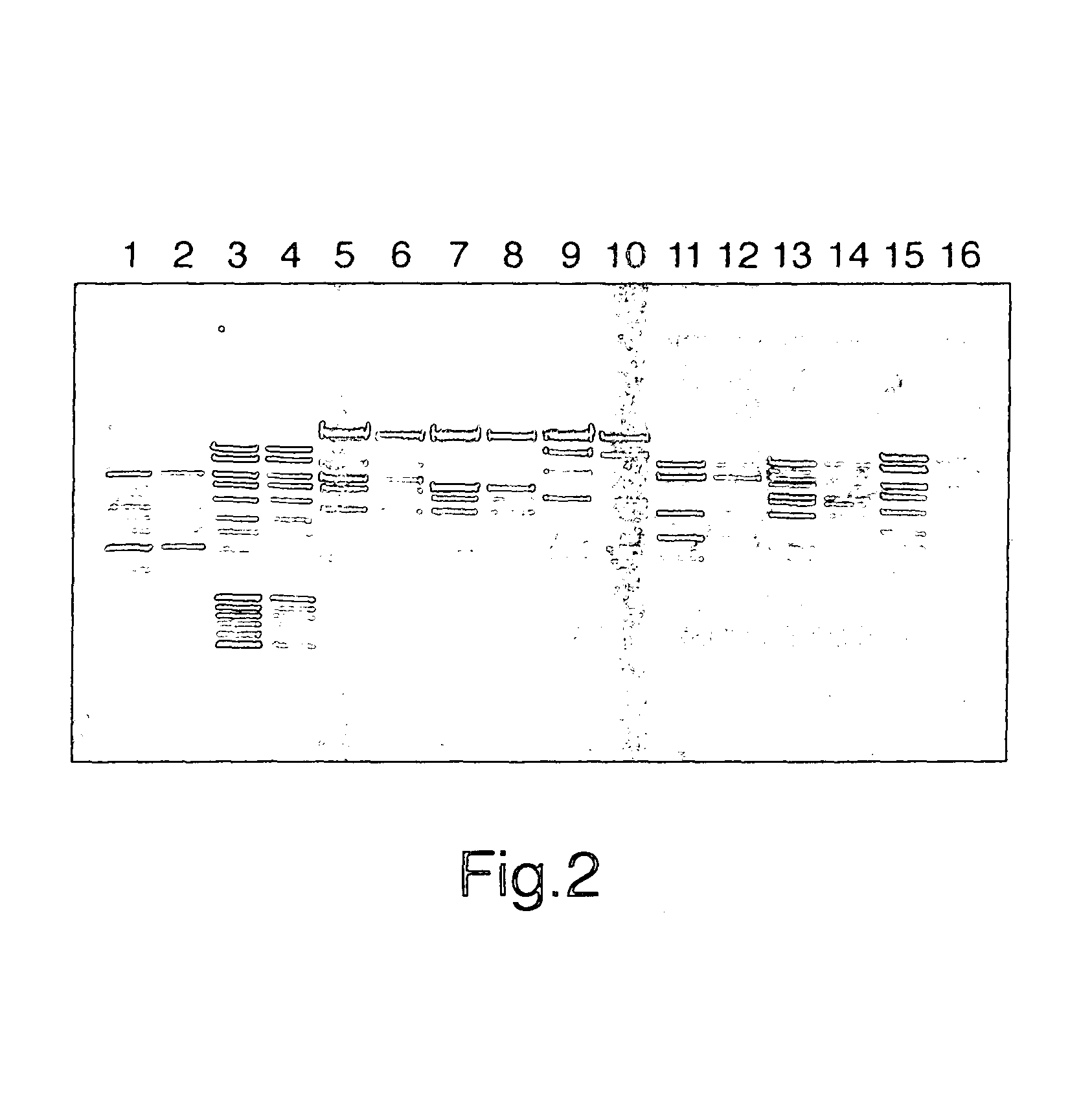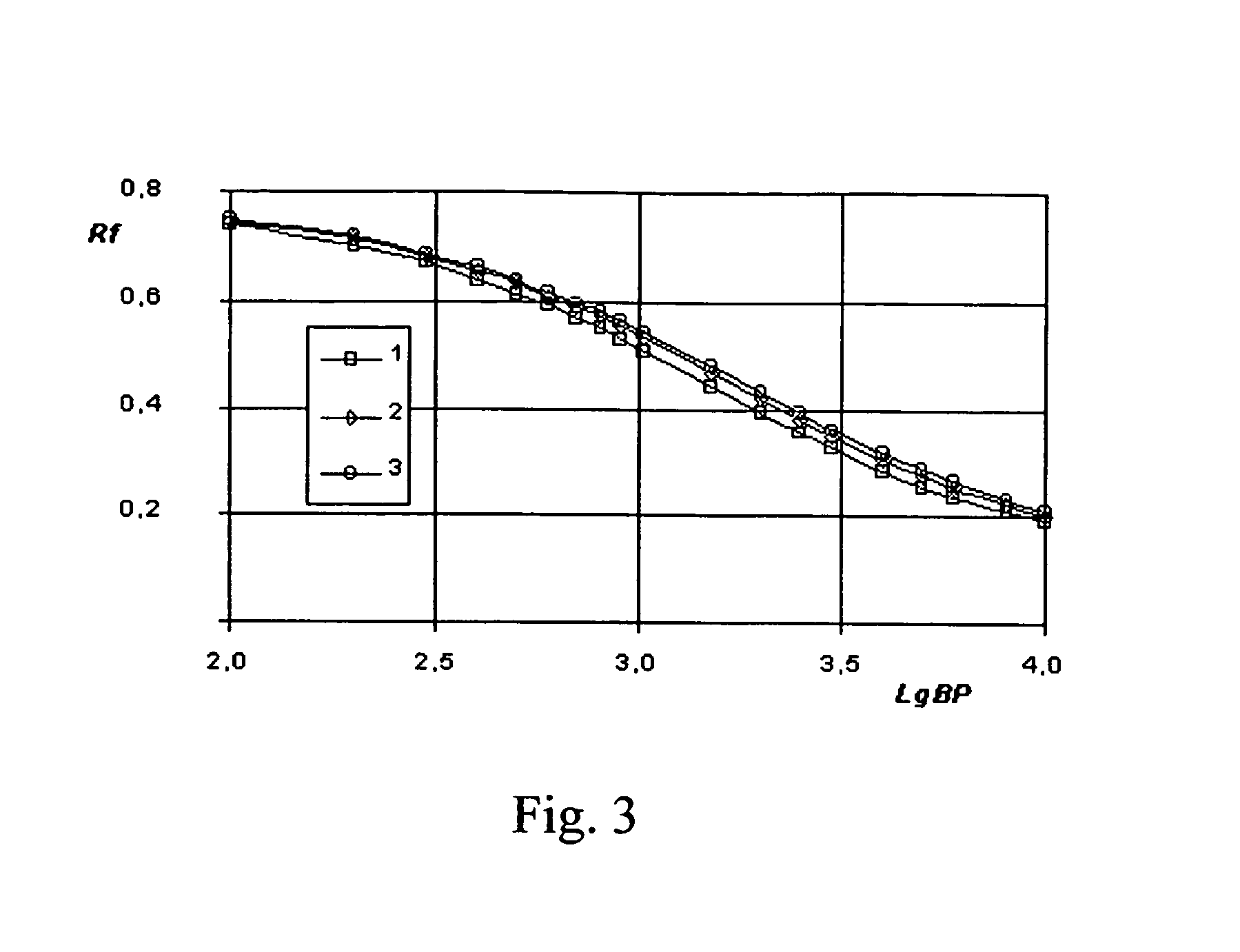Electrophoretic gels and their manufacture
a technology of electrophoretic gels and electrophoretic medium, applied in the field of electrophoretic gels, can solve the problems of reducing the application range of electrophoretic medium, affecting the separation and/or resolution of neutral gel systems, and limited shelf life of many precast gels
- Summary
- Abstract
- Description
- Claims
- Application Information
AI Technical Summary
Benefits of technology
Problems solved by technology
Method used
Image
Examples
example 1
Graft-polymerization of Poly(ethylene glycol)methyl Ether Acrylate (PEGMEA, Mn 454) onto Agarose.
[0120]Powder agarose (2.45 g) is dispersed in 350 ml of deionized water in a 500 ml three-neck round-bottom flask. The dispersion is heated in a microwave oven up to boiling sometimes mixing it for better homogenization. After full dissolution of agarose, the flask was connected to a reflux condenser, and the solution is tempered to 50° C. and is held at that temperature under nitrogen flow for 20 min. to oust the air. Than under magnetic stirring 3.21 ml (3.5 g) of PEGMEA was gently added into the flask. Finally the solution of 0.0064 g of cerium (4+) ammonium nitrate in 3.5 ml of 0.01 N aqueous nitric acid was dropped. The flow of gaseous nitrogen was maintained during the reaction of graft-polymerization to ensure inert atmosphere in the flask. The solution in the flask was stirred at 50° C. for 4 hours. The resulting viscous modified agarose solution was poured into the beaker and le...
example 2
Kinetics of Graft-Polymerization of Pegmea (MN 454) onto Agarose.
A. Spectrophotometric method.
[0121]Graft-polymerization of PEGMEA onto agarose was carried out by the method disclosed in the example 1. 2.5 ml aliquots of the reaction mixture were sampled every 30 min. and diluted to 50 ml using bidistilled water. Optical density of the solution at 210 nm in 1 cm thick quartz spectrophotometer cell was measured using spectrophotometer SF-26. The residual amount of PEGMEA in the sample solution compared to the initial value (%) was calculated as the ratio:
[0122]X=DD0×100,
where D—optical density of the reaction mixture after fixed time of grafting;[0123]D0—optical density of the reaction mixture before grafting.
B. Bromide-bromate method.
[0124]Graft-polymerization of PEGMEA onto agarose was carried out by the method disclosed in the example 1. 2 g aliquots of the reaction mixture were sampled every 30 min., dissolved in 6-8 ml of 50% acetic acid and diluted to 10 ml. 25 ml of 0.1 N brom...
example 3
Preparation of an Electrophoresis Gel
[0134]100 g of a modified agarose gel was placed into a beaker and heated in a microwave oven up to melting and boiled for several min. until full homogenization of the modified agarose solution. TAE buffer stock solution (×50) was prepared, per liter: TRIS base 242 g, glacial acetic acid 57.1 ml, 0.5 M EDTA (pH 8.0) 100 ml and water to 1 liter. 2 ml of TAE buffer concentrate and 50 μg of ethidium bromide were added under vigorous stirring to the modified agarose solution and the solution was cast into the cassette for electrophoresis to make electrophoretic media of the dimensions 16×8×0.5 cm. Electrophoresis gel was formed under natural cooling of the cast solution for 1 hour.
PUM
| Property | Measurement | Unit |
|---|---|---|
| wt. % | aaaaa | aaaaa |
| temperature | aaaaa | aaaaa |
| gelling temperature | aaaaa | aaaaa |
Abstract
Description
Claims
Application Information
 Login to View More
Login to View More - R&D
- Intellectual Property
- Life Sciences
- Materials
- Tech Scout
- Unparalleled Data Quality
- Higher Quality Content
- 60% Fewer Hallucinations
Browse by: Latest US Patents, China's latest patents, Technical Efficacy Thesaurus, Application Domain, Technology Topic, Popular Technical Reports.
© 2025 PatSnap. All rights reserved.Legal|Privacy policy|Modern Slavery Act Transparency Statement|Sitemap|About US| Contact US: help@patsnap.com



